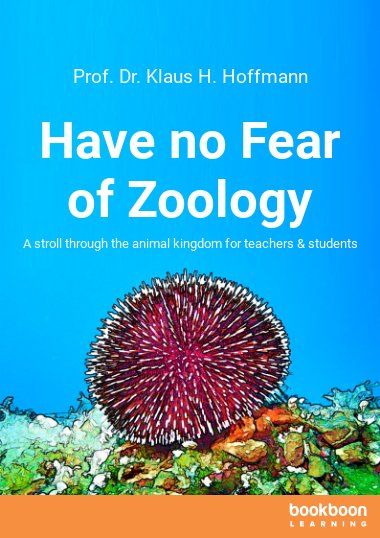After an introduction to the evolution of animals and the systematics of the animal kingdom, the most important animal phyla, from the unicellular organisms to the mammals, are presented with regard to their structure, function and their adaptations to the environment. Emphasis is placed on the importance of animals for humans. Each chapter begins with a presentation of the most important technical terms and ends with questions for self-examination of the learned material. Information on current specialist literature is found in a reference list. The book contains 17 tables, 13 illustrations and 27 photos.
About the author
Prof. emer. Dr. Klaus Hubert Hoffmann was Chairman of Animal Ecology I at the University of Bayreuth until 2012. After completing his studies in Biology, Chemistry and Geography at the Friedrich-Alexander-University (FAU) Erlangen-Nuremberg, he received his doctorate at the Institute of Animal Ecology and Animal Physiology of FAU Erlangen-Nuremberg. Following a postdoctoral year at the Scripps Institution of Oceanography at the University of California, San Diego in 1974, he took position of a research associate at the Institute of Zoology at the University of Erlangen-Nuremberg. In 1978 Prof. Hoffmann accepted a professorship for General Zoology at the University of Ulm. In 1990, he was visiting professor at the University of Kuwait and received the Merckle Research Prize in the same year. In 1994 Prof. Hoffmann accepted the position as Chair of Animal Ecology I at the University of Bayreuth. From 1997 to 1999 he was Dean of the Faculty of Biology, Chemistry and Geosciences at the University of Bayreuth. From 2001 to 2007, he was the spokesman for the German Research Foundation’s 678 Graduate School “Ecological importance of chemical signals in insects – from structure to function”. From 2002 to 2010 he was President of the Council of European Entomology Congresses. In 2002 he received the Alexander-von-Humboldt Research Prize South Africa, which involved several research stays at the University of Capetown. From 2008 to 2012, Prof. Hoffmann was the coordinator of the Master’s degree program “Molecular Ecology” at the University of Bayreuth.
His research in entomology, animal physiology and molecular ecology resulted in 160 original publications, 46 reviews, book contributions and three books. Prof. Hoffmann is an Associate Editor of the journal “Zeitschrift für Naturforschung C (Biosciences)”. Since 2015, he has been a Senior Expert of the Senior Expert Service (SES) in Bonn.

